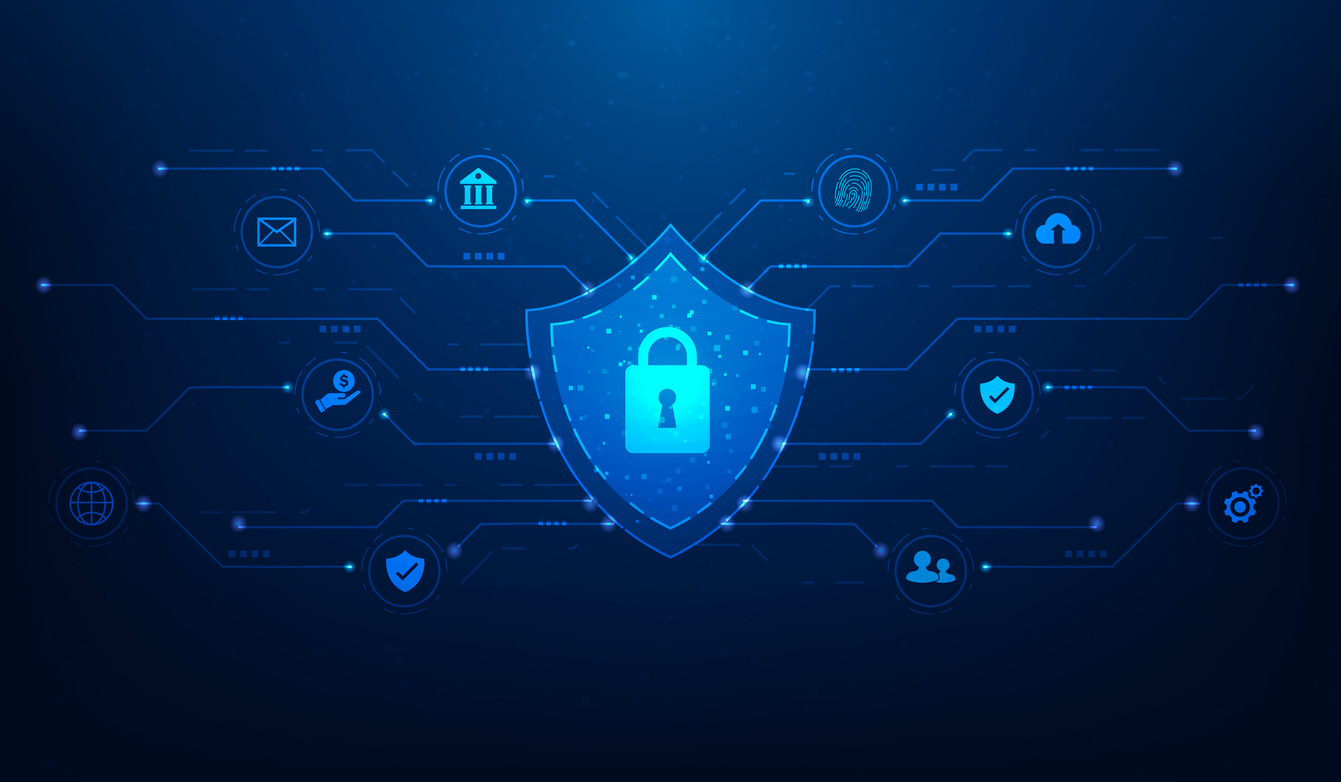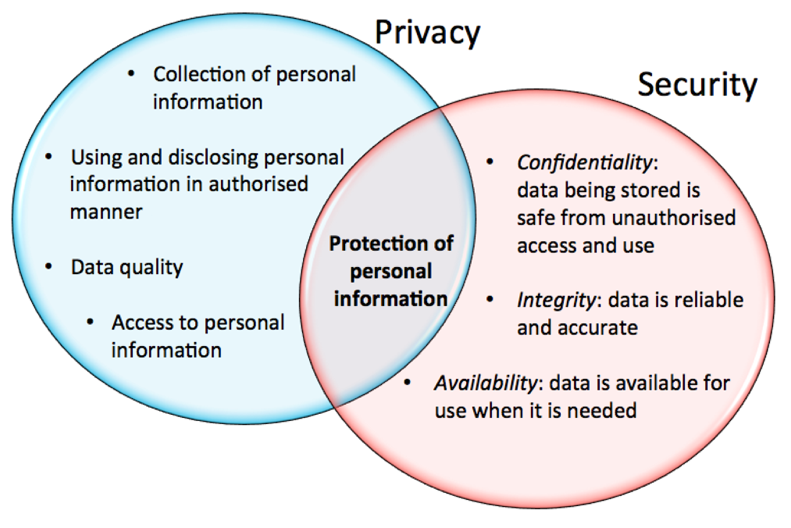The Importance of FFT Pipeline Protection in Preventing Unauthorized Access
The Importance of FFT Pipeline Protection in Preventing Unauthorized Access
Blog Article
The Important Duty of Data and Network Safety in Shielding Your Details
In an era where information violations and cyber dangers are progressively widespread, the significance of durable information and network security can not be overemphasized. The execution of efficient security measures, such as security and gain access to controls, is vital to maintaining depend on and operational honesty.
Comprehending Information Safety
In today's digital landscape, a frustrating bulk of organizations face the complexities of information safety and security. This critical element of information modern technology includes protecting sensitive information from unauthorized accessibility, corruption, or theft throughout its lifecycle. Information security includes various methods and innovations, consisting of encryption, gain access to controls, and information masking, all targeted at guarding information against violations and vulnerabilities.
An essential facet of data safety and security is the identification and category of information based upon its level of sensitivity and relevance. This classification assists organizations prioritize their safety and security efforts, designating sources to shield the most critical information successfully. Implementing robust policies and procedures is important to make sure that workers comprehend their function in keeping information safety.
Normal audits and analyses help in recognizing possible weak points within a company's information protection structure. In addition, employee training is important, as human error remains a significant consider data violations. By cultivating a society of protection understanding, companies can alleviate dangers related to insider hazards and oversight.
Relevance of Network Safety
Network safety stands as a foundation of an organization's overall cybersecurity approach, with about 90% of businesses experiencing some kind of cyber danger over the last few years. The significance of network security hinges on its ability to protect delicate information and keep the stability of company procedures. By securing network infrastructures, companies can stop unauthorized access, data breaches, and various other harmful tasks that might jeopardize their possessions and track record.
Implementing robust network safety measures not just helps in mitigating threats but additionally fosters trust fund among customers and stakeholders. When clients are ensured that their personal and economic information is safe, they are most likely to engage with the organization, leading to improved customer loyalty and organization growth.
In addition, a well-structured network safety structure assists in conformity with various regulative requirements. Organizations must abide by sector criteria and lawful requireds concerning data defense, and efficient network safety methods can guarantee compliance, therefore avoiding potential charges.

Common Cyber Hazards
Organizations need to remain vigilant versus a variety of cyber hazards that can undermine their network protection efforts. Amongst the most usual risks is malware, which incorporates viruses, worms, and ransomware that can disrupt operations, swipe data, or hold information hostage. Phishing strikes, where malicious stars impersonate trusted entities to trick individuals right into revealing delicate information, remain to grow in elegance, making user education and learning essential.
An additional prevalent danger is distributed denial-of-service (DDoS) assaults, which overload systems with traffic, making them unavailable to legit users. Insider threats, whether willful or unintentional, pose substantial dangers as staff members might unintentionally expose sensitive information or purposefully manipulate their access for harmful functions.
In addition, susceptabilities in software and hardware can be exploited by cybercriminals, highlighting the significance of normal updates and spot monitoring. Social engineering strategies additionally make complex the landscape, as aggressors control people right into disclosing confidential details through psychological manipulation.
As these risks develop, organizations need to keep an aggressive strategy to recognize, minimize, and react successfully to the ever-changing cyber threat landscape, protecting their important information and maintaining trust with stakeholders. fft pipeline protection.
Best Practices for Protection
Implementing robust protection actions is vital for safeguarding delicate details and preserving operational integrity. Organizations should start by carrying out detailed danger assessments to recognize vulnerabilities within their systems. This proactive strategy makes it possible for the prioritization of safety efforts tailored to the details requirements of the organization.
Adopting solid password policies is important; passwords need to be complicated, consistently altered, and managed making use of safe password management devices. Multi-factor verification (MFA) adds an added layer of safety by needing added confirmation methods, hence minimizing the risk of unapproved access.
Normal software go to this web-site application updates and spot administration are essential to shield against understood susceptabilities. Executing firewall programs and invasion discovery systems can even more secure networks from external dangers. Worker training is just as important; personnel should be informed on recognizing phishing attempts and recognizing the importance of data protection protocols.
Information security should be used for sensitive information, both at rest and en route, to make sure that even if information is obstructed, it remains hard to reach (fft pipeline protection). Organizations should develop and frequently test event reaction plans to ensure swift activity in the occasion of a safety violation. By adhering to these best practices, organizations can boost their security posture and shield their critical information possessions
Future Trends in Safety And Security
The landscape of data and network security is consistently advancing, driven by innovations in modern technology and the raising refinement of cyber dangers. As organizations significantly embrace cloud computing and IoT tools, the standard of safety and security will change toward a zero-trust model. This approach emphasizes that no entity-- outside or internal-- is naturally trusted, mandating confirmation at every gain access to point.
In addition, the use of expert system and device learning in protection procedures gets on the increase. These modern technologies allow anticipating analytics, enabling organizations to recognize vulnerabilities and possible risks prior to they can be exploited. Automation will likely play an essential role in enhancing security actions, reducing the time required to mitigate violations.
Additionally, regulative structures will continue to tighten up, requiring more strict conformity measures. Organizations needs to remain abreast of evolving policies to guarantee they fulfill safety and security requirements.

Verdict
In verdict, the relevance of data and network security can not be overemphasized in the modern digital landscape. With the prevalence of cyber hazards and the boosting complexity of governing demands, companies need to adopt thorough safety and security measures to secure sensitive info. By executing reliable techniques and remaining educated about arising trends, services can boost their durability versus potential assaults, ensuring data honesty and fostering depend on amongst stakeholders and customers. Prioritizing safety remains vital for functional continuity and long-lasting success.
In an age where information violations and cyber hazards are increasingly prevalent, the significance check this site out of robust data and network safety can not be overemphasized. Information security encompasses various techniques and innovations, consisting of file encryption, gain access to controls, and information masking, all aimed at securing info against breaches and vulnerabilities.
A fundamental aspect of information safety is the recognition and classification of data based on its sensitivity and significance.The landscape of data and view it network security is continually evolving, driven by advancements in technology and the increasing refinement of cyber dangers.In final thought, the relevance of data and network protection can not be overstated in the modern electronic landscape.
Report this page